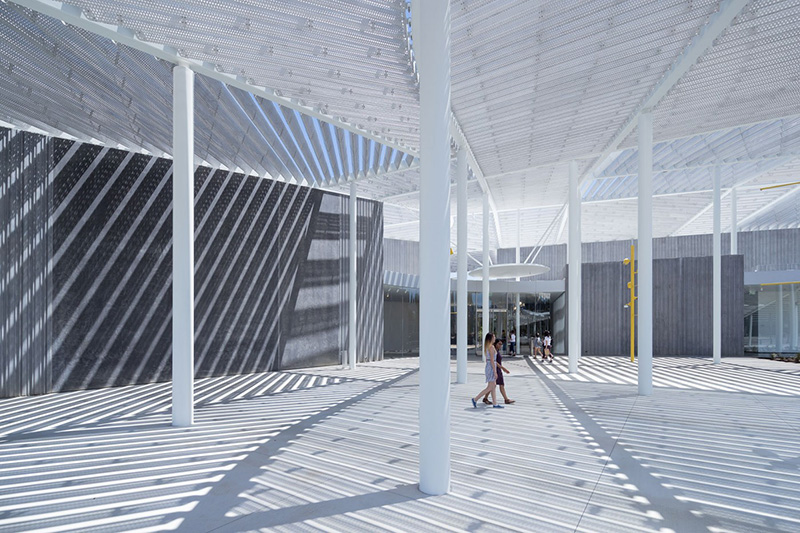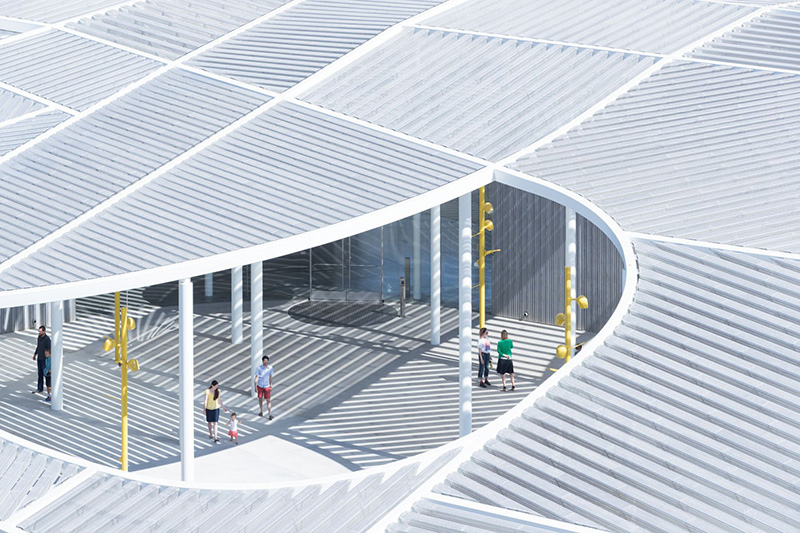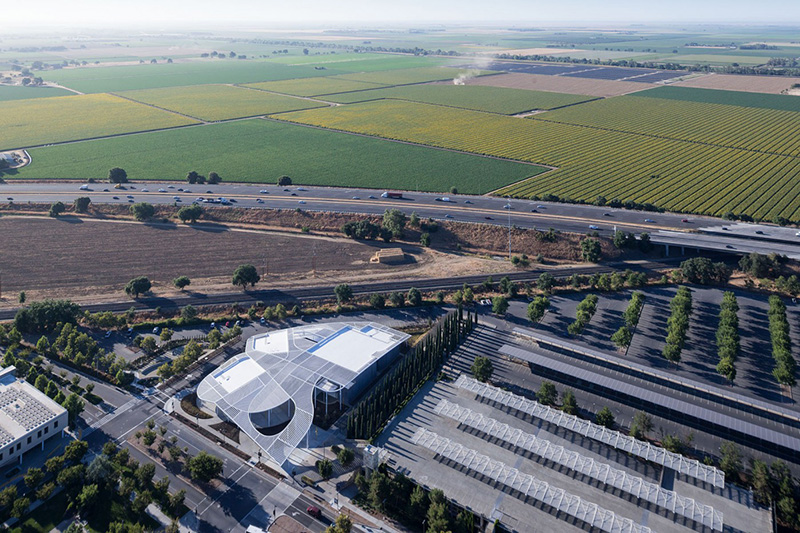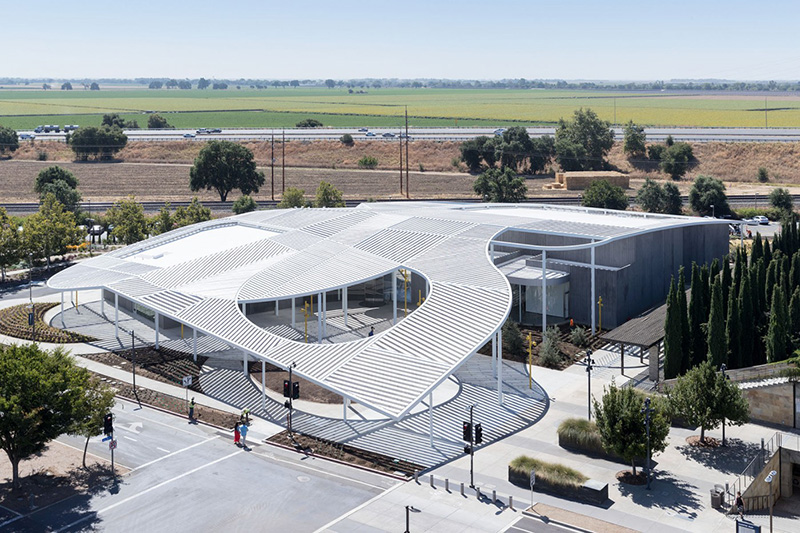ARCHITECTURE:Jan Shrem & Maria Manetti Shrem Museum of Art
 Jan Shrem and Maria Manetti Shrem Museum of Art, is a Contemporary art Museum set amid the expansive views of California’s Central Valley and surrounding farmlands. The visitors experience a new form of Museum architecture, one achieved by integrating outdoors and indoors, blurring the usual hierarchical relationship between exhibition and teaching spaces, that furthers the museum’s educational mission. The museum is designed by associated architects SO–IL and Bohlin Cywinski Jackson, chosen in a design competition in 2013.
Jan Shrem and Maria Manetti Shrem Museum of Art, is a Contemporary art Museum set amid the expansive views of California’s Central Valley and surrounding farmlands. The visitors experience a new form of Museum architecture, one achieved by integrating outdoors and indoors, blurring the usual hierarchical relationship between exhibition and teaching spaces, that furthers the museum’s educational mission. The museum is designed by associated architects SO–IL and Bohlin Cywinski Jackson, chosen in a design competition in 2013.
By Dimitris Lempesis
Photo SO–IL Office Ltd Archive
The Jan Shrem and Maria Manetti Shrem Museum of Art captures a spirit of optimism, imagination and invention. As an overarching move a “Grand Canopy” (4.650 m²) extends over both site and building. The distinct shape of this open roof presents a new symbol for the campus. The Canopy blurs the edges of the site, creating a sensory landscape of activities and scales. The Grand Canopy is a sweeping, intricately patterned permeable cover embodying the defining characteristic of the architecture: porosity, as seen foremost in the blurring of separation between the outdoors and the indoors. The Manetti Shrem Museum is a collection of indoor and outdoor rooms: exterior spaces flow into the interior and the placement of curved curtain walls and windows reinforce the integration. Flexibility has been designed into most aspects of the building, allowing spaces to be continually reconfigured to accommodate new activities and new ways of looking and making. An outdoor wall doubles as a screen for video projections. The clear span of the central gallery zone facilitates regular reconfiguration. The gallery layout is expandable. Three pavilions are connected by a glass lobby to create a continuous, ground level interior. Within this interior is a central courtyard, which opens to the sky. Tucked under the Grand Canopy, the museum’s façade is asymmetrical and organic in feeling: an arcing glass entrance is flanked by walls of a subtly irregular corrugated concrete. The light perforated roof cover functions to unify the pavilions and passageways; modulate and project changing light and silhouettes; provide shade; set the stage for gatherings; create a mini-environment for plantings; and provide a new symbol for UC Davis. The museum’s landscape is conceived as a series of outdoor rooms, with the building an extension of the natural environment. Palette and texture reinforce this unified approach: plant selections employed a mixture of species native to the region and appropriate for the local climate. Plantings were used to reinforce building elements; olive trees were chosen because their silver foliage harmonizes with the light tones of the Grand Canopy and planted mounds under the canopy follow its curves. With the canopy directing shifting rays of light, the events plaza was designed to mimic forest understory.
Info: Jan Shrem & Maria Manetti Shrem Museum of Art, 54 Old Davis Rd, Davis, California, https://manettishremmuseum.ucdavis.edu



